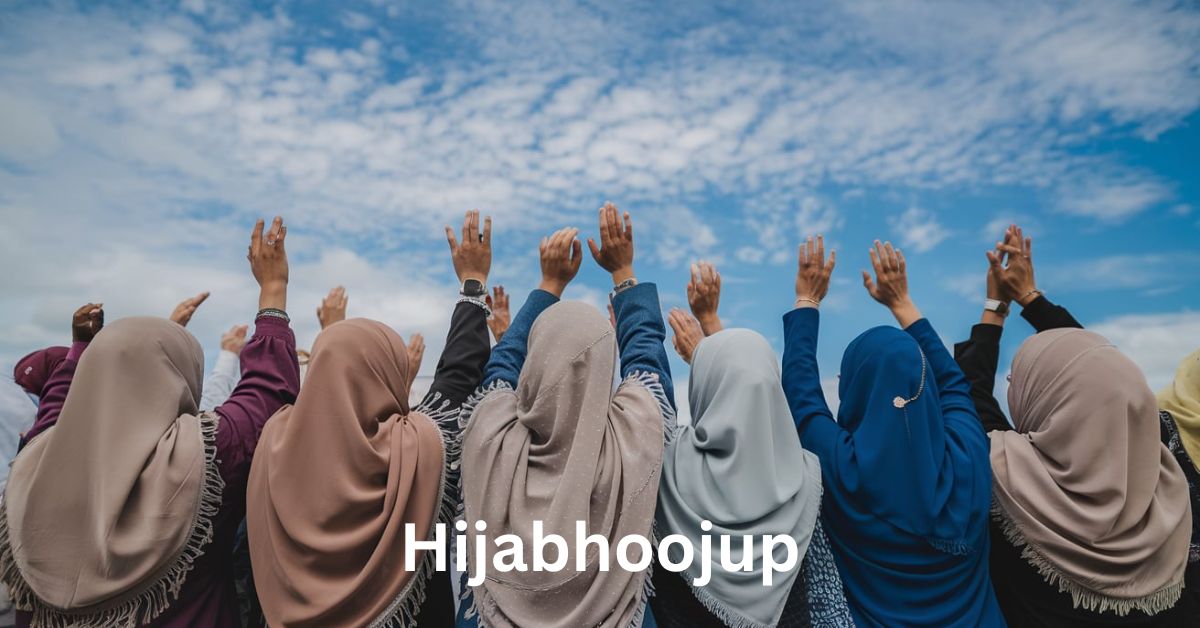Hijabhoojup is a term that combines cultural, historical and religious meanings, especially as it relates to the practice of wearing the hijab, a traditional headscarf worn by many Muslim women. However, Hijabhoojub goes beyond the simple act of covering the head. It embodies a deeper story about identity, empowerment and connection to one’s faith and culture. In this article, we will explore the history of Hijabhoojup, its role in modern society and its impact on the lives of women who choose to adopt it. We will also discuss how Hijabhoojup boldly stands as a symbol of strength, dignity and resilience.
Historical roots of Hijabhoojup
The original origins of the Hijabhoojup
The concept of hijab dates back centuries and is rooted in various religious and cultural traditions. The word “hijab” itself comes from the Arabic word “hajaba,” which means to hide or cover. Historically, the practice of veiling was not unique to Islam. It was common in some ancient civilizations, such as Mesopotamia, Byzantium, and Persia, where women wore veils as a sign of modesty and social status.
The role of hijabhoojup in Islamic tradition
In Islam, the hijab is not just a piece of cloth. It is an expression of faith. The Quran, the holy book of Islam, contains verses that emphasize modesty and encourage both men and women to dress modestly. For women, the hijab represents a commitment to these principles. But hijabhoojup does not simply mean modesty. It also relates to identity and self-expression.
The evolution of hijabhoojup over time
Over the centuries, the practice of wearing the hijab has evolved. In different regions and cultures, the hijab has taken on different shapes, styles, and meanings. For some, it is just a scarf. For others, it is a full coverage that includes the body and face. The concept of hijabhoojup reflects this diversity and the personal choices women make about how they wear their hijab.
Hijab in the Modern World
Hijab as a Symbol of Empowerment
In today’s world, the hijab is often seen as a powerful symbol of empowerment. Many women who wear the hijab do so as an affirmation of their identity and autonomy. By choosing to wear it, they are making a statement about their values, beliefs, and the freedom to express themselves in a way that is aligned with their faith and culture.
The intersection of hijab and fashion
The intersection of hijab and fashion has sparked a vibrant global movement. Elegant, modern interpretations of the hijab have become popular around the world. Designers and influencers have embraced the hijab to create clothing lines and fashion collections that meet the needs of Muslim women who want to dress fashionably, yet modestly. This blend of tradition and modernity has redefined the image of the hijab and it has become part of mainstream fashion.
The role of social media in promoting hijab
Social media platforms have played an important role in promoting hijab and challenging stereotypes. Muslim women around the world are using social networks to share their experiences, styles and stories. Influencers and bloggers have become voices for the hijabjump movement, using platforms such as Instagram, YouTube and TikTok to show that the hijab can be both a spiritual and a fashion choice. This online presence has helped to normalize the hijab and create a sense of community among those who wear it.
Hijabjujup and the challenges women face
Dealing with misconceptions and stereotypes
Despite the growing acceptance of Hijabhoojup, women who wear it still face challenges such as misconceptions and stereotypes. In some societies, the hijab is mistakenly associated with oppression and forced modesty. However, for many women, Hijabhoojupis a personal choice that represents freedom, not restriction. It is essential to recognize and respect the diversity of experiences of women who wear hijab, because women’s reasons for wearing hijab are as diverse as their backgrounds.
Legal and social challenges
In some countries, wearing hijab has been controversial, leading to debates on religious freedom and secularism. Some countries have implemented laws that restrict or ban the wearing of hijab in public spaces, sparking protests and court battles. These challenges highlight the ongoing struggle of Muslim women for the right to practice their religion and express their identity freely. In this context, hijabjujup becomes a symbol of resistance and resilience against discrimination.
Mental and Emotional Impact of Hijab
Wearing the hijab can also have mental and emotional impacts for women. While many women feel empowered and proud in wearing the hijab, others may find it difficult to make the decision in the face of internal and external pressures. It is important to support women’s choice, whether they choose to wear the hijab or not, and to create an environment where they can make that decision without fear of judgment or discrimination.
Global Impact of Hijab
Hijab and Cultural Exchange
The concept of hijab transcends cultural and geographical boundaries and has become a symbol of cultural exchange and understanding. As more people around the world learn about the hijab and its meaning, they begin to understand the diversity of Islamic culture and the values that hijab represents. This exchange has helped to bridge cultural gaps and promote mutual respect and understanding.
Impact of Hijab in the United States
In the United States, hijab is recognized as an important cultural and religious practice. American Muslim women have played a pivotal role in promoting hijab through activism, education, and fashion. By sharing their stories and experiences, they contributed to a broader understanding of what it means to wear the hijab in a Western context. Their efforts have helped to challenge stereotypes and create a more inclusive society where diversity is valued.
Hijab-Jup and the Future
Looking ahead, hijab-Jup is likely to continue to evolve and adapt to the changing needs and desires of Muslim women around the world. The ongoing dialogue around hijab-Jup will shape its future and influence how it is perceived and practiced in different societies. What remains consistent, however, is hijab-Jup’s underlying message: a commitment to faith, identity, and women’s empowerment.
Conclusion
Hijabhoojup is a powerful concept that reflects the rich history, cultural significance, and contemporary relevance of the hijab. It embodies the values of modesty, faith, and empowerment that many women hold dear. As Hijabhoojup continues to evolve, it will remain a symbol of strength, dignity, and resilience for those who choose to adopt it. By understanding and respecting hijab-ju-p, we can contribute to a more inclusive and compassionate world where diversity is celebrated and everyone is free to express their identity in their own unique way.
Frequently Asked Questions about Hijabhoojup
What is Hijab?
Hijab is a concept that encompasses the use of the hijab as a symbol of modesty, faith, and identity. It reflects a woman’s personal decision about how to wear it as well as the broader cultural, religious, and social significance of this practice.
Why do women choose to wear the hijab?
Women choose to wear the hijab for a variety of reasons, including religious beliefs, cultural identity, and personal choice. For many, the hijab is a way to express their commitment to faith and modesty. It can also be a symbol of empowerment and self-expression.
Is Hijab just a head covering?
Hijab is more than just a head covering. It is about adopting a lifestyle that is in line with one’s beliefs and values. While hijab generally refers to the headscarf, hijab includes various forms of modest dress and behaviors that reflect an individual’s commitment to their faith and culture.
How has hijabjupu had an impact on fashion?
Hijabjupu has had a huge impact on the fashion industry, especially in the field of modest fashion. Designers and brands have created stylish, contemporary clothing that meets the needs of women who want to dress fashionably, yet modestly. Social media influencers have also played an important role in promoting hijabjupu and showing how hijab can be integrated into modern fashion.
What challenges do women face when wearing hijab?
Women who wear hijab can face several challenges, including misunderstandings, stereotypes, and legal restrictions. In some societies, hijab is falsely associated with oppression, leading to discrimination. However, many women see Hijabhoojup as a symbol of strength and resistance against these challenges.
How can society better support women who choose to wear hijab?
Society can better support women who choose to wear hijab by promoting understanding and respect for their choice of hijab. This includes challenging stereotypes, defending religious freedom, and creating an inclusive environment where women can express their identity without fear of judgment or discrimination.










